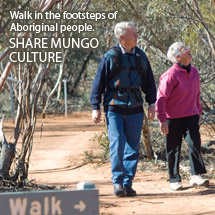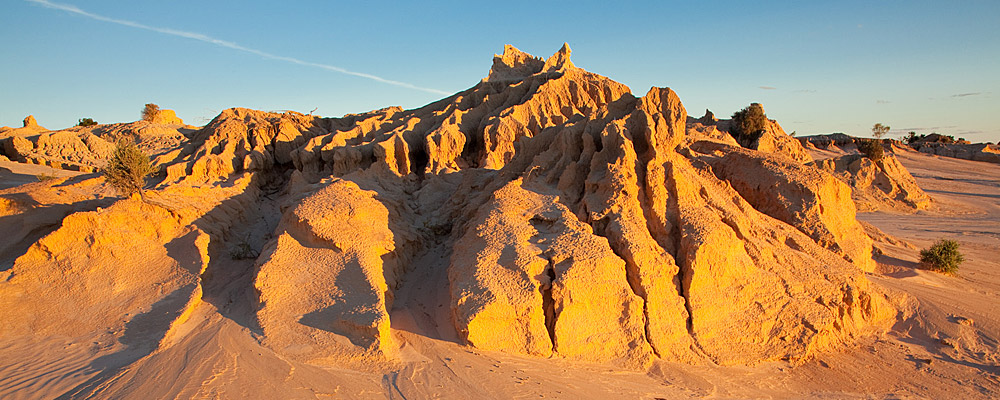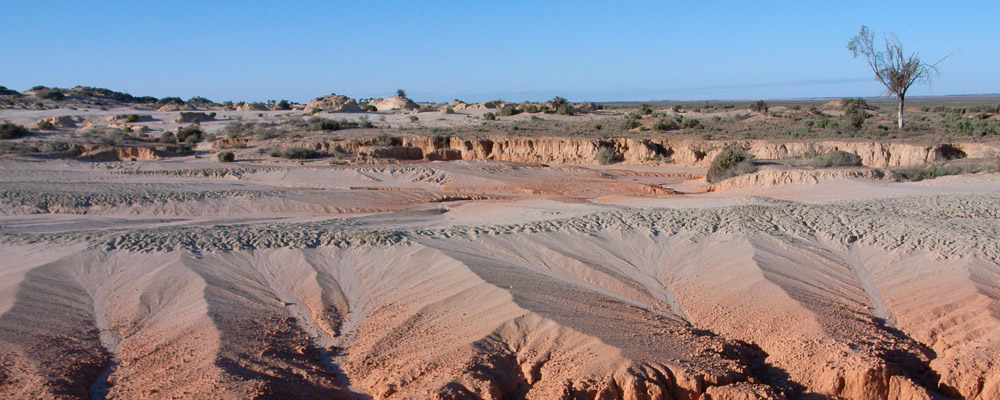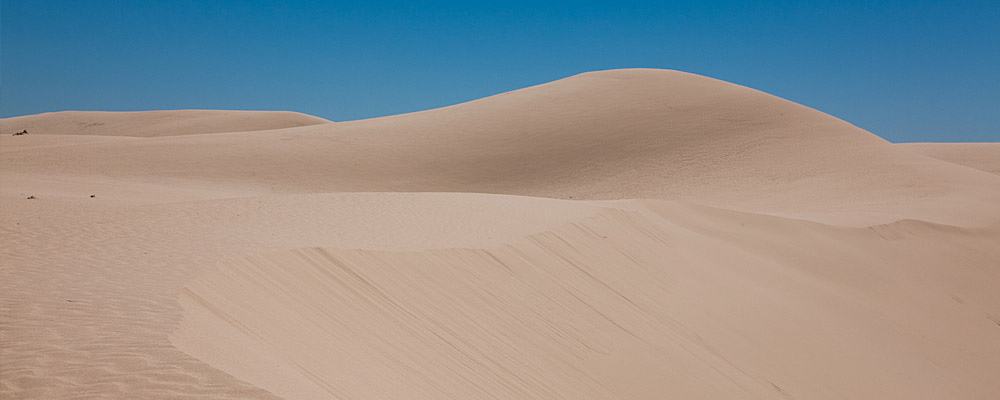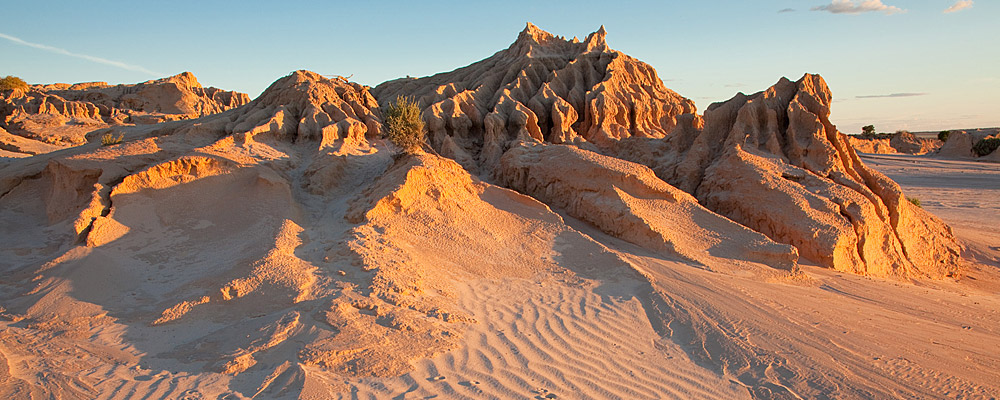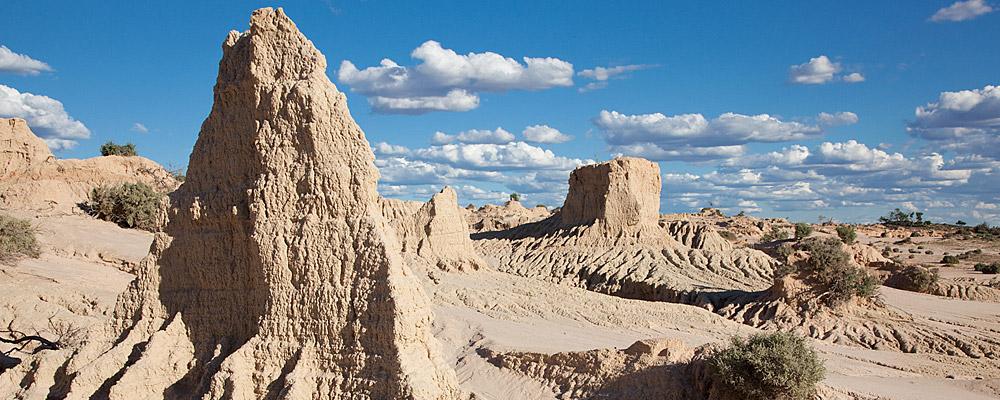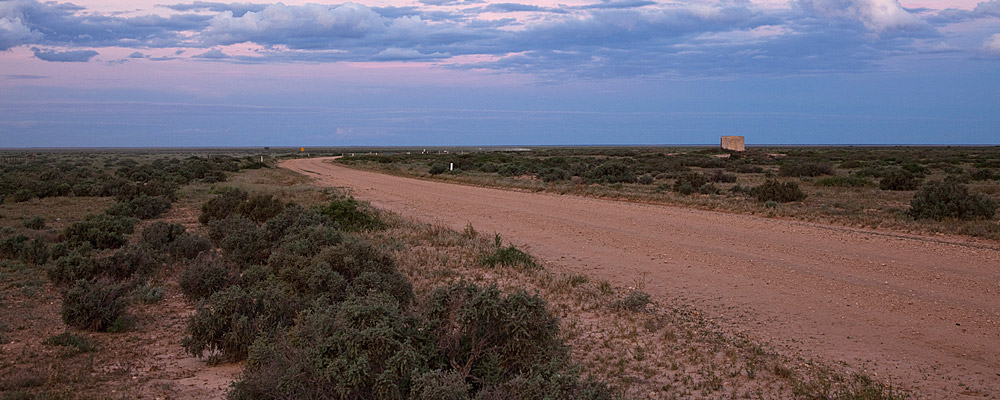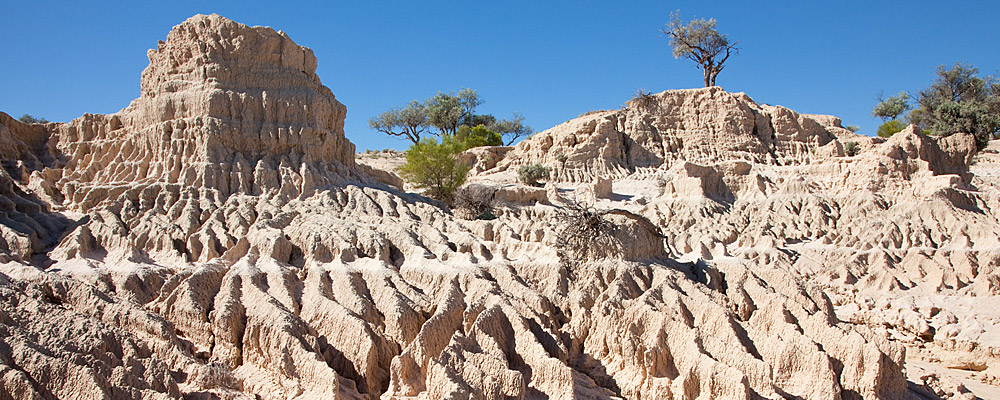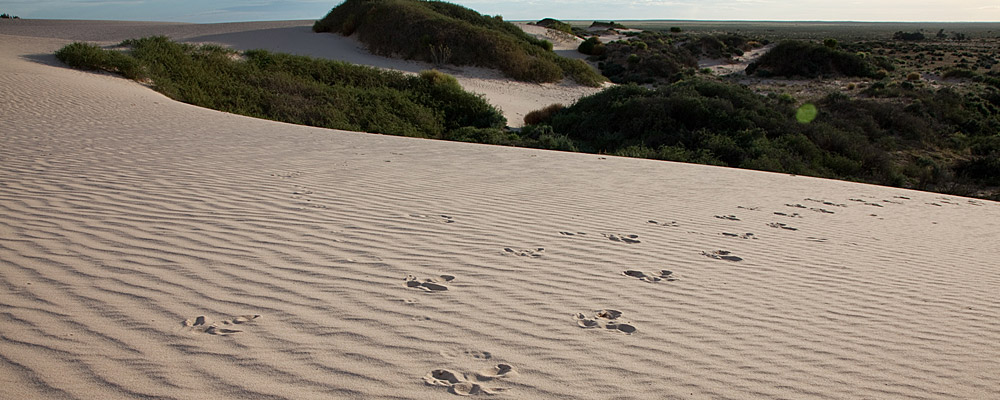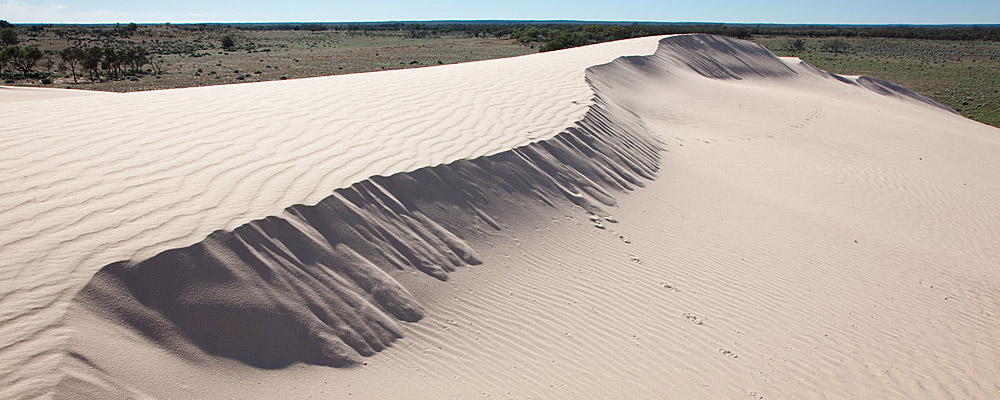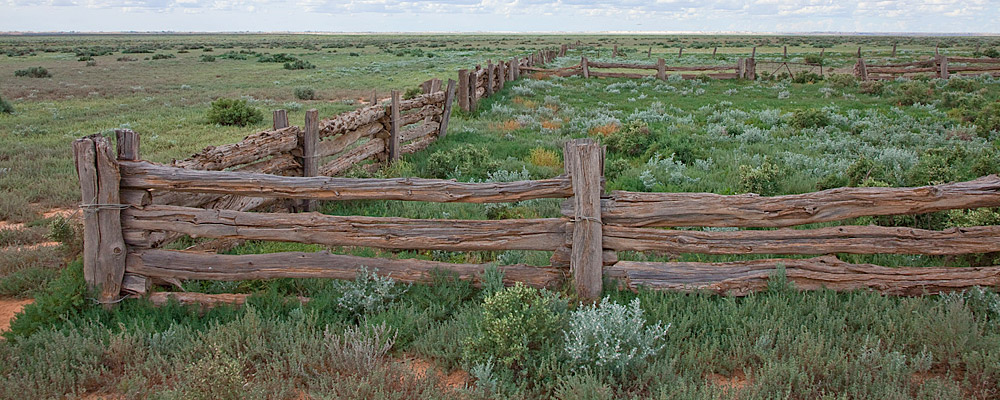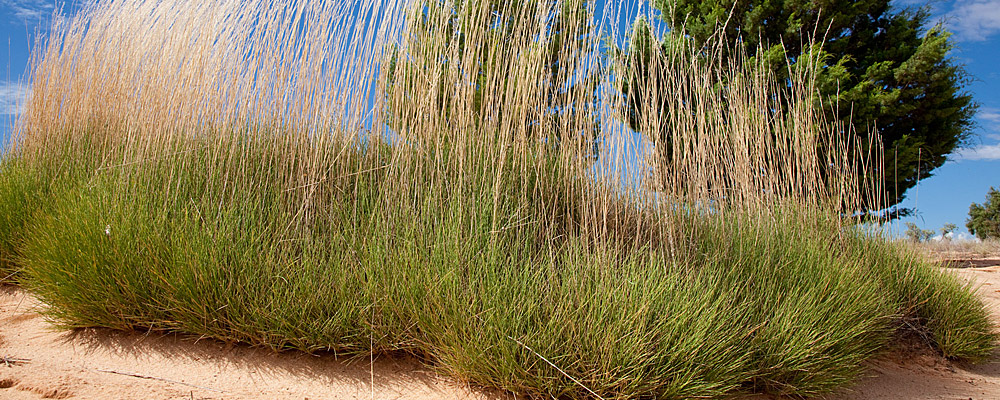Share Mungo Culture
Ancient Footprints
Why can't we see the real trackways?

Eventually, three years after their re-discovery and intense scrutiny, the trackways were carefully covered over again with a bed of sand - the same sand that had protected the footprints from the elements for thousands of years. The tracks are so fragile and precious that they have to be protected from everybody, even researchers. Preserved, they can be re-examined in the future if the Aboriginal Elders and others agree it is necessary.
We were scared that someone would dig them up. We knew that dinosaur footprints had been stolen from a place in Western Australia. At the time, we never had the protection to keep them safe.
Lottie Williams, Paakantji Elder
How many tracks are there?
The intense research has revealed a lot about the footprints. Approximately 500 prints have been recorded in more than 25 individual trackways. Most of these are human but there are also some marsupial and emu tracks. The trackways disappear beneath the sand dunes, with less than a third of the claypan so far exposed.
Are tracks like these rare?
These are the only human tracks of Pleistocene age yet discovered in Australia, and the largest collection of such prints anywhere in the world.
The fossil trackways were discovered in the Willandra Lakes region of New South Wales during 2003 and are the largest known collection of Pleistocene human footprints in the world.
Steve Webb, Matthew L. Cupper and Richard Robins, scientists
